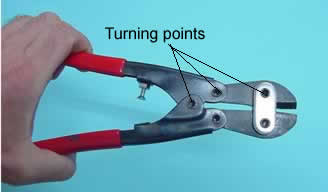Exercises
What type of lever is shown on the right?
Would a weight greater than 200 kg be able to lift the load?
How would you reposition the fulcrum so that a weight much less than 200 kg can lift the load?

A crowbar can be used in many different ways to help lift heavy objects.
Consider the picture on the right.
What type of lever is formed?
is this type of lever a force or distance multiplier? Explain
Consider the picture on the right.
What type of lever is formed?
Consider the position of the load, fulcrum and effort. Is this type of lever a force or distance multiplier? Explain

Modern day cranes use simple machines to lift heavy objects. Consider the crane on the right what type of lever is this?
Is this designed to multiply force or distance? Explain
Where is the load located?
Where is the effort located?
Where is the fulcrum for this lever?
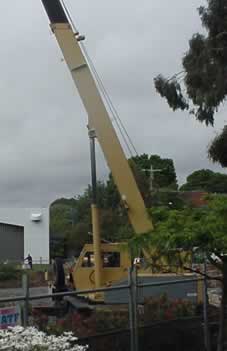
Consider the mechanism for opening a can of softdrink.
What type of lever is depicted on the right.
Is this lever a force or distance multiplier? Explain.
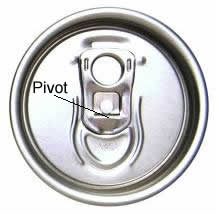
What type of lever is formed by the foot when standing on your toes?
Look at the distance the from the fulcrum the load and effort are.
Discuss why this lever is a force multiplier.



An inflexible piece of metal 160 cm long is suspended by a rope as shown on the right.
What mass must be hung at the 150 cm mark in order to balance?

The term mechanical advantage is sometimes used to describe a simple machine. Mechanical advantage is the number you get when you divide the load by the effort.
Mechanical advantage = load/effort.
With this information at hand find the mechanical advantage of the lever shown on the right.

Jonathon uses a 6m metal pole to lift a 3 kg rock as shown on the right.
What type of lever is this?
Find the mechanical advanrage of this lever.


The simple machine shown on the right is used to push a hole into cans. It is acting as a lever.
a) Identify the effort, fulcrum and load.
b) Is this a force multiplier or a distance multiplier? Explain.
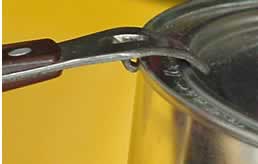
Identify three uses of levers in ancient civilisations and explain their impact on every day life or warfare.
Wire cutters are made up of two levers.
Bolt cutters are similar but but have a longer handle and can slice through thicker metal.
Discuss why it is easier to cut thicker metal if we use a longer handle. Use the terms mechanical advantage, force multiplication in your explanation.
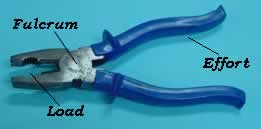
The instrument on the right is used to cut through thick metal. The turning points of the moving parts are shown.
Redraw this instrument and indicate how the various parts move when the handles are squeezed.
Explain how this instrument works using the terms, fulcrum, lever, mechanical advantage, load and effort.
